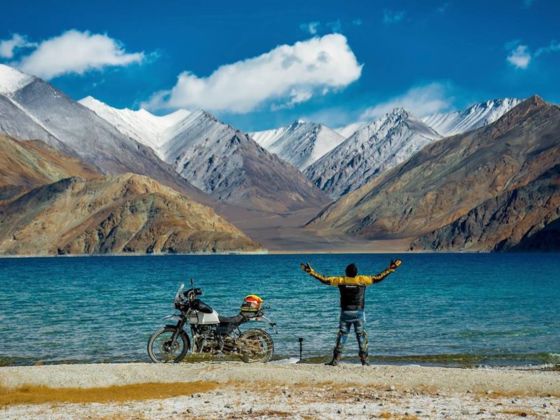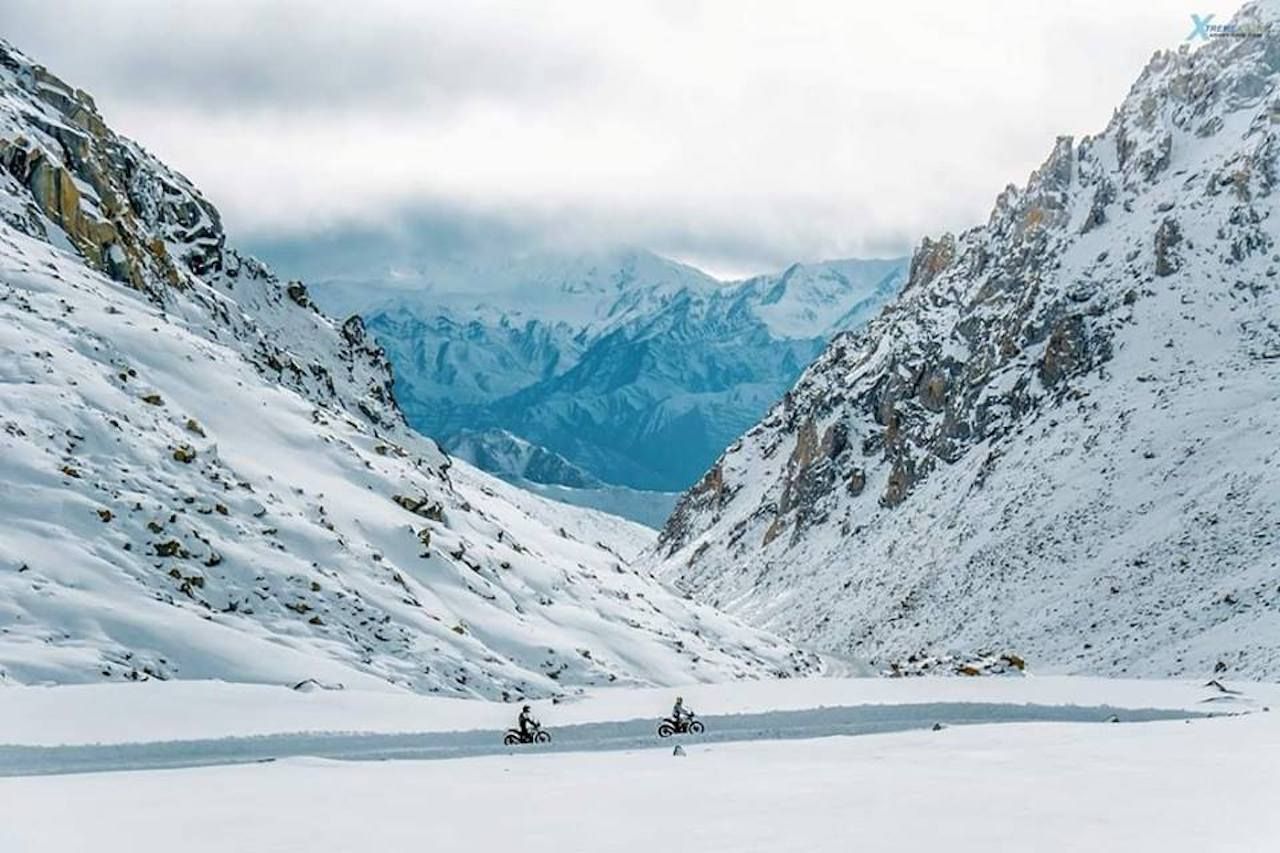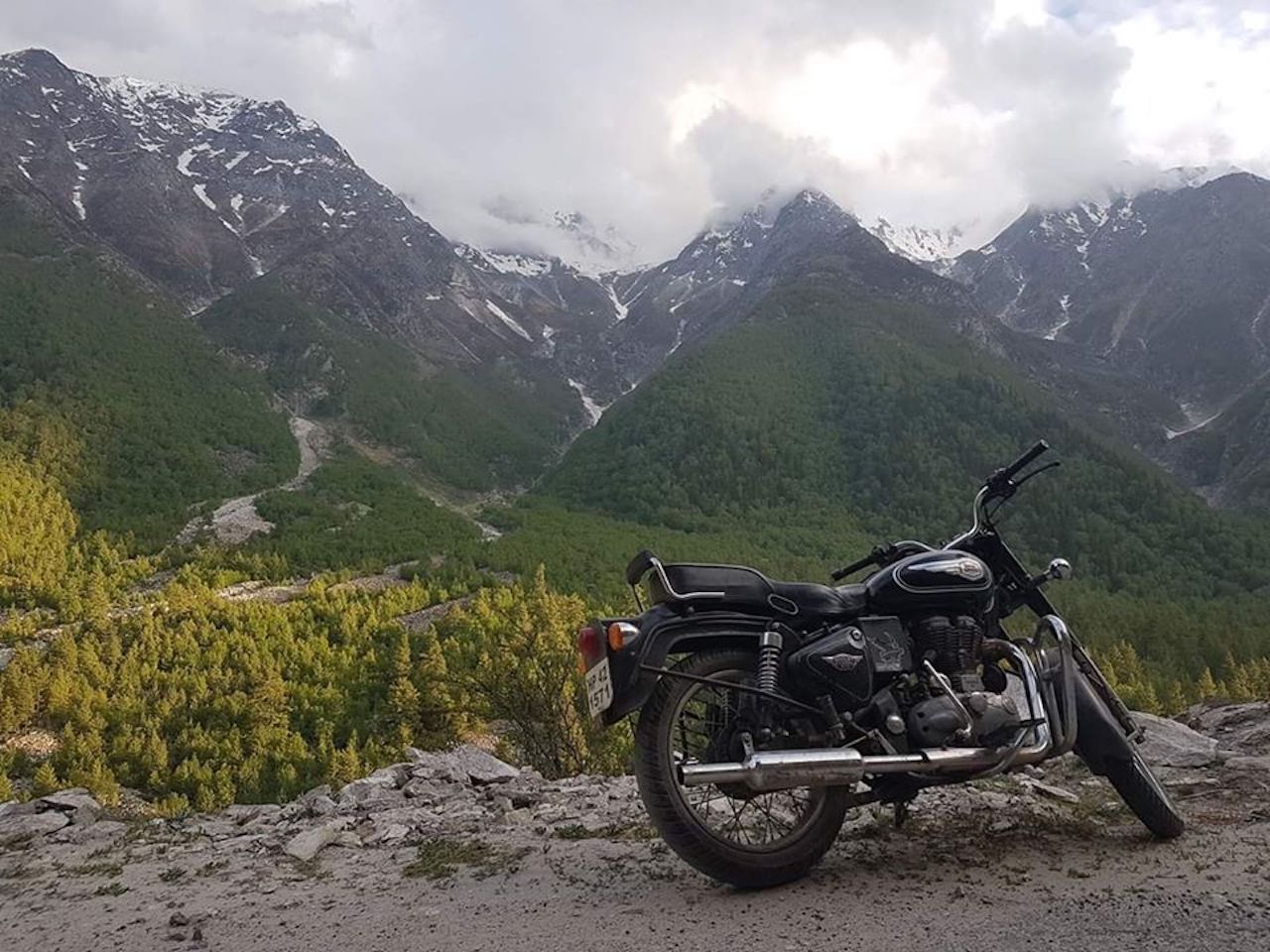Picture this: You’re cruising through the Himalayan high country, winding around tight mountain roads and crossing frosted rivers. Your fingers are gripping the handlebars, and a brisk wind is blowing, but you can’t help smiling and yelling “WHOOO!” This is a typical day on the Ride The Himalayas tour, a 15-day motorbike ride from the Indian city of New Delhi into the Himalayan high country that takes place three times each summer.
Ride The Himalayas founder and lead guide Rahul Yadav, a software engineer by trade, and his team take visitors on the ride of their lives through some of the highest roads in the world, visiting everything from lakes to monasteries along the way. It’s a challenging adventure and the most epic way to see the Himalayas. Equally important, it’s all-inclusive — all you have to do is sign up, show up, and try to quell that fear of heights.



